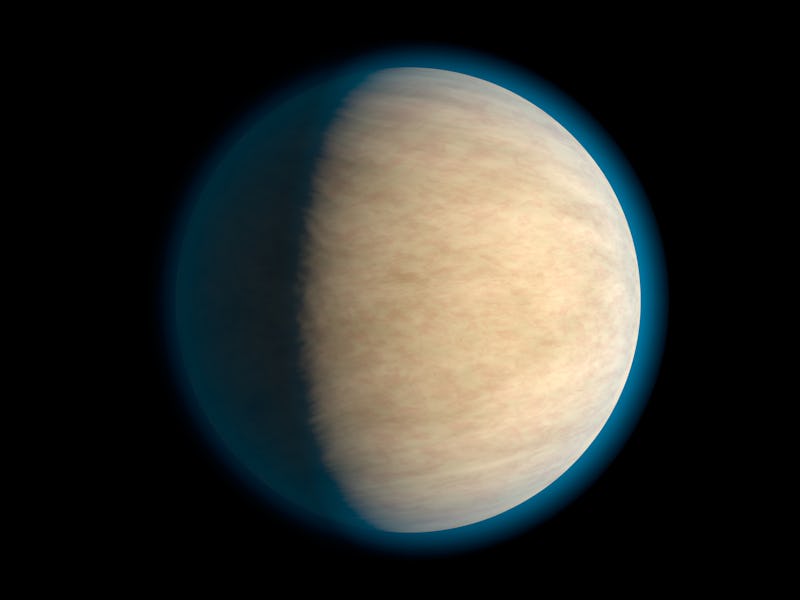Scientists Think Exoplanet Clouds Could Be Keeping Water Hidden From View
'Hot Jupiter' exoplanets might possess a lot more water than we think.

Everybody knows that for a planet to host life, the most important factor is water. So when it comes to the catalog of exoplanets we’ve discovered — now numbering more than 3,200 — the most important is about just that.
While that search has been limited to rocky planets, astronomers now believe that perhaps even gaseous “hot Jupiters,” which scorch upwards of 2,000 degrees Fahrenheit in some cases, could possess water, in the form of clouds in the atmosphere.
In a new study published in The Astronomical Journal, scientists at NASA’s Jet Propulsion Laboratory report that atmospheres of about half of the hot Jupiters they’ve studied with the Hubble Space Telescope were obscured by clouds or haze.
For the research team, those clouds might be covering a significant amount of atmospheric water our space telescopes cannot yet detect. They might be causing us to underestimate planetary water reserves in the air by a factor of two.
Atmospheric water could be hiding on hot Jupiters.
“The motivation of our study was to see what these planets would be like if they were grouped together, and to see whether they share any atmospheric properties,” says Aishwarya Iyer, a JPL intern and lead author of the study.
In this particular study, 19 hot Jupiters previously studied by Hubble were assessed. Water vapor had been found in the atmosphere of 10 of these exoplanets. But as a result of extrapolation methods, scientists had spread that information to a dozen other studies of hot Jupiters — even though the water content of those 19 planets was derived through different kinds of analytical methods.
The JPL team decided to go back and standardize the data by collecting the datasets of the 19 hot Jupiters and creating an average light spectrum, and then comparing this to models of exoplanet atmospheres ranging from cloudless to cloud-heavy. In the end, they found that haze or clouds were responsible for blocking half the atmosphere for nearly every planet.
These results actually correlate well with a study published last December in Nature, which also suggested clouds or haze could keeping water on hot Jupiters hidden from our space telescopes. Moving forward, researchers will want to take advantage of newer technology like the upcoming James Webb Space Telescope to get sharper data that might be able to see past obstacles like cloud cover.
A big question remains, however — even if there is more water than we think on these hot Jupiters, would life actually be able to survive and evolve on these worlds? The chances are slim — but they are also slim in nearly every other scenario. It’s best not to totally count out any possibilities when it comes to E.T. Life might find a way!